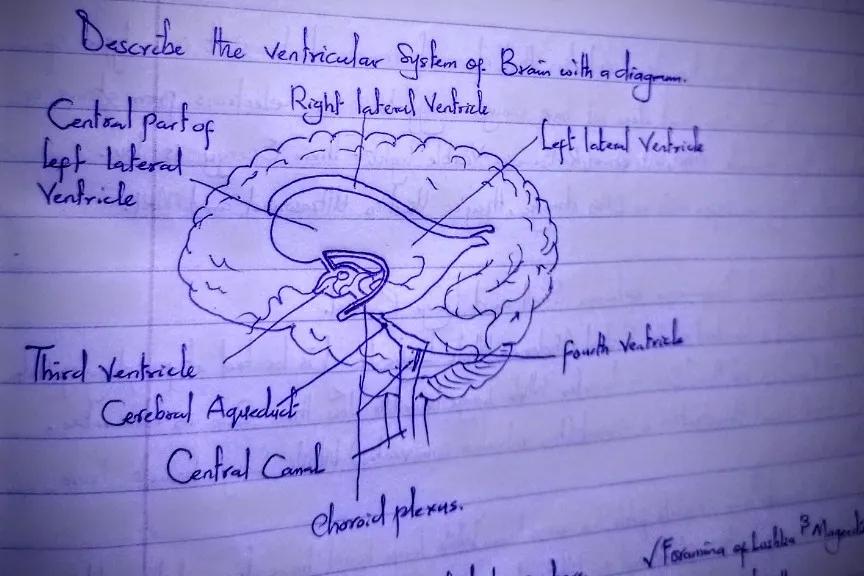Hey friends!
So recently, I dove deep into something that most people don’t pay much attention to unless they’re in the medical field ,the ventricular system of the brain. It’s one of those parts of neuroanatomy that we often gloss over in theory, but once I started sketching it myself, it became real and fascinating in a way I hadn’t expected.

The image I’ve shared above? That’s my own hand-drawn diagram of the ventricular system. No tracing, no digital help just a pen, my notebook, and my determination to understand what’s going on inside our skulls. While it might not be perfect, the process of drawing it out was therapeutic, and more importantly, it taught me more than any textbook ever could.
My reason for doing this is because I’ve always believed that drawing something forces your brain to engage with it on a deeper level. Reading about the lateral ventricles, third ventricle, cerebral aqueduct, and so on just wasn’t sticking with me. But once I began sketching, I had to think about where everything sits in relation to each other which ventricle connects to what, and how cerebrospinal fluid (CSF) flows through this network. It made things click.
What I Learned
- Lateral Ventricles: These are the biggest and most prominent. There’s one in each cerebral hemisphere left and right, and they both connect to the third ventricle via the interventricular foramen (not shown in the sketch, but it’s there in concept).
- Third Ventricle: Located in the midline, this thin cavity sits between the two halves of the thalamus. This was fun to draw because of how tucked in and central it is.
- Cerebral Aqueduct: A narrow channel that links the third ventricle to the fourth. I had to really pay attention here, because it's easy to overlook or misplace in diagrams.
- Fourth Ventricle and Central Canal: The fourth sits between the cerebellum and brainstem and continues down as the central canal of the spinal cord. Drawing this made me appreciate just how seamlessly the brain is designed.
- Choroid Plexus: I labeled this too, as it's responsible for producing CSF. It's present in all ventricles and crucial to the whole system.
Doing this sketch and labeling each part brought a strange kind of joy. It felt like I was unwrapping the brain’s plumbing system, this quiet but essential structure that supports everything else. I guess sometimes we focus so much on the ‘higher’ functions like thoughts, emotions, or memory that we forget these underlying systems are what keep it all running.
If you’re a student, artist, or just a curious mind, I encourage you to try sketching what you're studying. Even if you're not good at drawing, the act of doing it will ground your learning.
I’d love to hear how others study or visualize complex systems like this. Do you draw too? Or do you have another method that works for you?
Thanks for reading, and I hope this inspires someone else to pick up their pen and dive into the details.